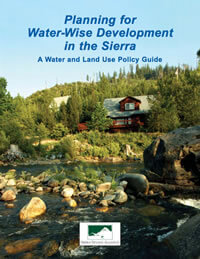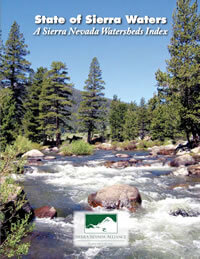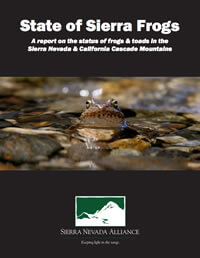The Alliance works to protect and restore Sierra Nevada watersheds, which are the lifeblood of ecosystems and communities in California and Nevada.
Our Work on Watersheds
- A Unified Voice for the Sierra
Speaking up in Sacramento for Sierra watersheds and giving our rural communities a voice in protection and utilization of our fragile natural resources - SNAP Program Coordination
14 years of placing SNAP members with Sierra-wide host sites to build workforce capacity conduct watershed restoration and assessment, mobilize community volunteers and educate citizens on watershed stewardship - Reports,Toolkits, and Guides
Sharing research and collaborative impacts on watershed health in the Sierra Nevada
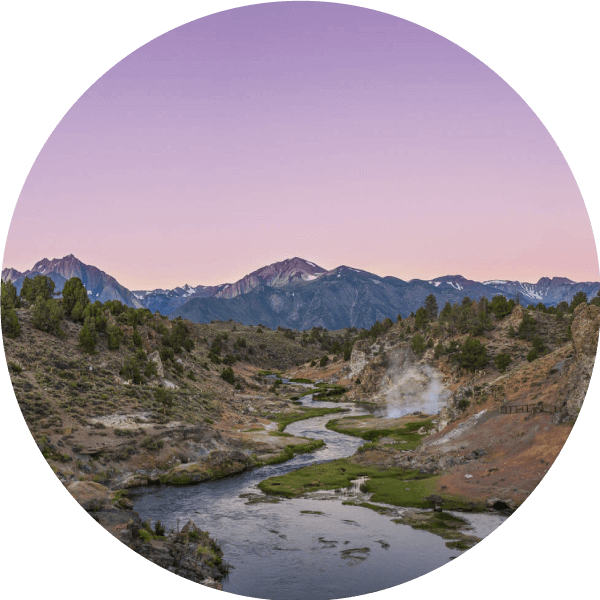
Sierra Watersheds Need Our Help
Sierra rivers, lakes and streams are impaired chemically, biologically, and physically. In some cases stretches of Sierra watersheds no longer adequately support wildlife; in other cases portions of Sierra lakes, rivers and streams have been noted as not supplying clean drinking water or supporting recreational uses such as swimming, boating or fishing. All in all, it’s a sad state of affairs for a region that is home to half the wildlife of the state, supplies 60% of California’s developed water and attracts over 50-60 million visitor-days to recreate on or near these waters each year.
What Are Our Watersheds Worth?
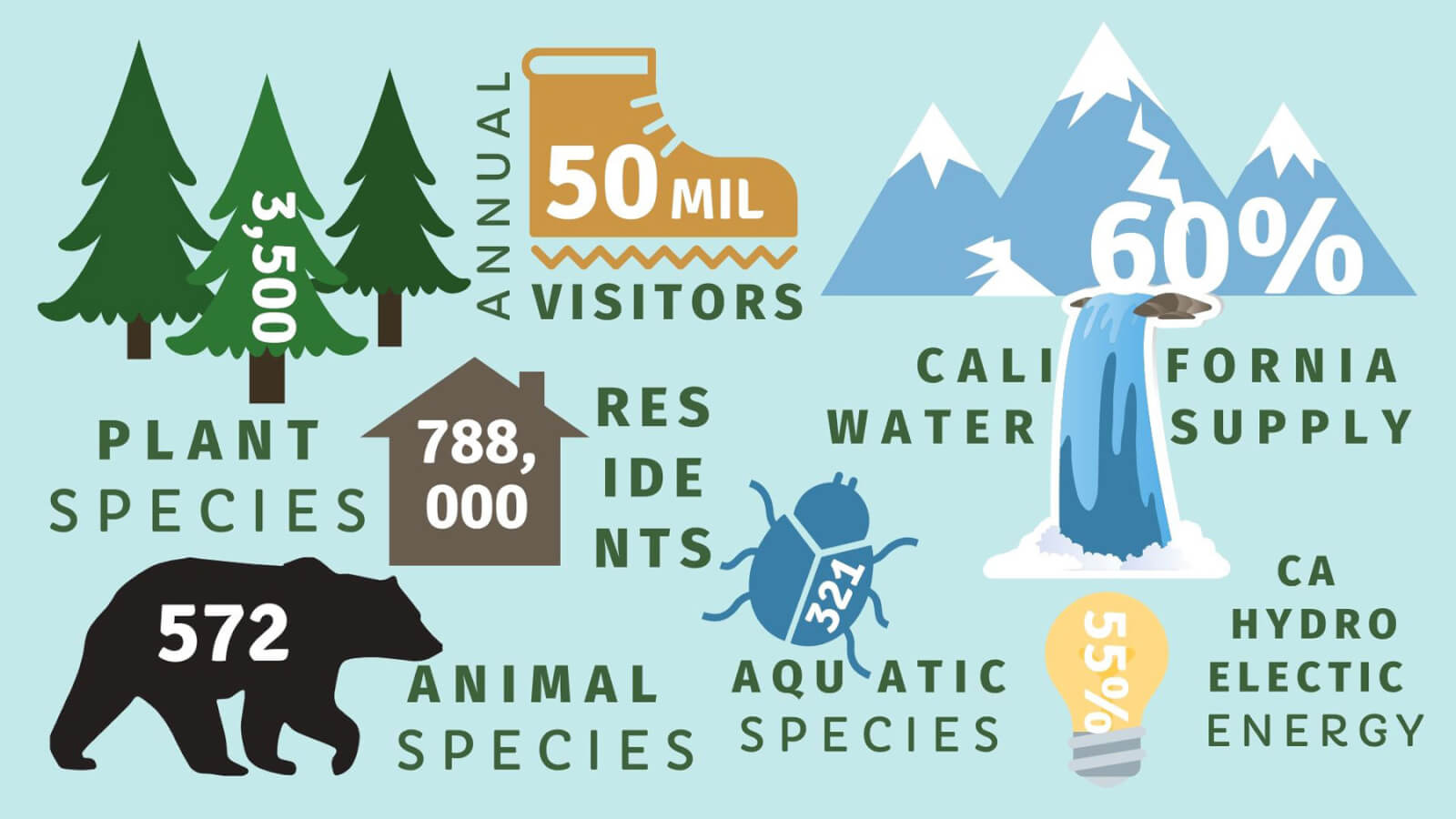
Sierra Watershed Facts
788,000
Residents live in and depend on Sierra watersheds
24,000 sq. mi.
Land area, including 4 National Parks, 2 National Monuments, and 20 Wilderness Areas
$92 billion
Outdoor recreation industry dependent on Sierra rivers, lakes and streams.
400
Endemic plant species, meaning they are not found in any other parts of California
10
Rivers with Wild & Scenic federal and state designations
Millions
Visitors to the Sierra Nevada region each year
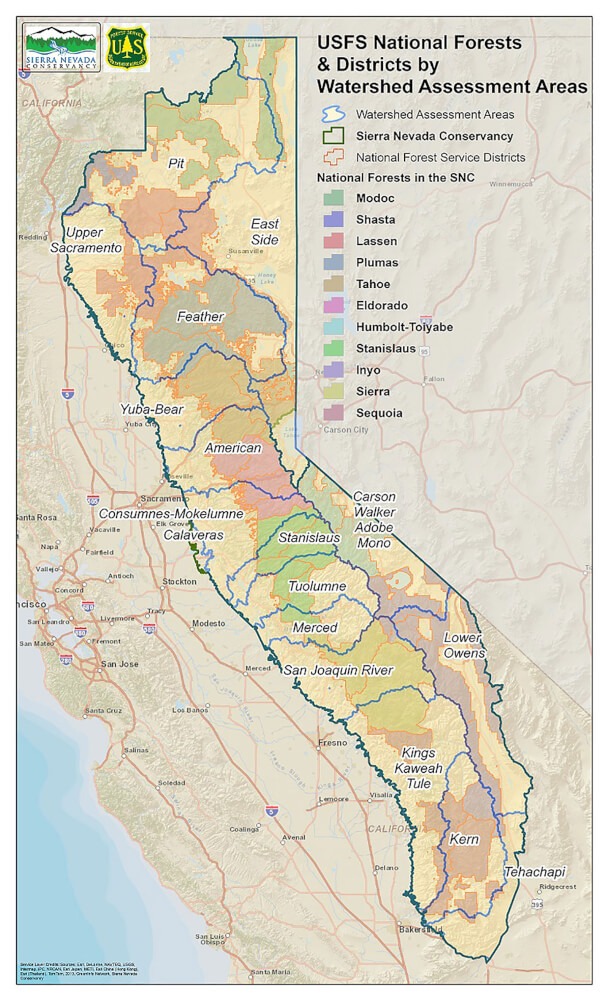
What are Watersheds?
The Sierra Nevada is made up of 16 major watershed areas, according to the Sierra Nevada Watershed Information Network, a resource of the Sierra Nevada Conservancy’s Watershed Improvement Program. A watershed is an area of land and water that captures precipitation and funnels it into a particular body of water, such as a stream, river or lake. Watersheds come in all sizes, with smaller watersheds combining to create larger ones. The functions of watersheds are numerous, and include: precipitation collection, plant and animal habitat, groundwater storage in aquifers, and runoff release to downstream locations.
Major Watersheds of the Sierra Nevada (North to South)
Western Sierra
- Pit
- Upper Sacramento
- Feather
- Yuba-Bear
- American
- Cosumnes-Mokelumne-Calaveras
- Stanislaus
- Tuolumne
- Merced
- Upper San Joaquin
- Kings-Kaweah-Tule
- Kern
- Tehachapi
Eastern Sierra
- Truckee-Eagle Lakes-Surprise Valley
- Carson-Walker-Mono-Adobe
- Lower Owens
For more information on specific watersheds, visit Sierra Nevada Conservancy’s website.
Reports and Publications
Planning for Water-Wise Development in the Sierra: A Water and Land Use Policy Guide
Poorly planned development has become a chief threat to the region’s waters. But what is good growth, from a watershed perspective? This guide provides local conservation groups, local government and the public useful information about the connection between development and water – water quality, water supplies and the health of the Sierra’s watersheds.
State of Sierra Waters: A Sierra Nevada Watersheds Index
The Sierra Nevada’s water is critical to the health, welfare and, indeed, to the very spirit of California and Nevada. Over 60% of California’s and most of Northern Nevada’s water supply comes from the Sierra Nevada. The region’s rivers, lakes and streams supply consumers, businesses and agriculture. Sierra rivers, lakes and streams also supply prime recreation – whether fishing, swimming, boating or simply marveling in the myriad flows – for residents and visitors alike. And they provide important habitat for wildlife.
While most people believe these majestic waters are pristine and pure, our previous report, Troubled Waters of the Sierra, shows that all but one of the Sierra’s 24 major watersheds are impaired. This report goes one step farther and establishes indicators the Alliance and others can revisit to track improvements or degradation of this precious resource over the years.
The viewer displays timber harvesting activities at the planning watershed level to provide information on past and present timber harvesting activities.
Six of the native frogs and toads of the Sierra Nevada and California Cascade ranges are experiencing dramatic declines in population. For example, the California red-legged frog, the largest native frog in the western United States, can no longer be found across 70 percent of its historic range in California and has almost completely disappeared from the Sierra foothills. These hard hit critters are part of a larger Global Amphibian Crisis; 40% of the world’s 6000 labeled amphibian species have declined recently and nearly one third are facing extinction. This latest publication of the Alliance is meant to raise awareness of and public concern for the plight of Sierra frogs and toads.
The Report covers a number of issues including:
- The value of Sierra and Cascade frogs and toads.
- An overview of individual species experiencing declines.
- An examination of the current stressors to those populations, which includes climate change, the chytrid disease and the introduction of non-native species.
- Potential next steps to address these issues.
- And a long list of resources to help local citizens and decision-makers, environmental organizations and resource managers better understand the problems facing Sierra frogs and toads, their far-reaching implications and how to make a difference.
Sierra Nevada Yard & Garden Guide
As wildfires rage across California, the Sierra Nevada Alliance offers a first of its kind guide to homeowners for creating a beautiful Sierra friendly yard and garden that:
- Guards against wildfire
- Is easy to care for and meets a family’s goals
- Exists in harmony with wildlife
- Uses low maintenance, native plants
- Protects and conserves community drinking water.
Sierra Nevada Yard & Garden is one stop shopping – defend your home from wildfire, protect water quality, create a low maintenance yard and more. The guide shows homeowners how to get beautiful gardens and yards that don’t require fuss for folks in the Sierra foothills, Eastern Sierra, and high country. The full color 157 page guide uses an innovative zone and island approach to fire safe designs and takes homeowners through a step-wise process: observe, design, select, and implement, making Sierra friendly yards simple and easy to create. The guide also includes chapters and appendices focused on plant selection, how-to, and yard and garden resources by sub-regions of the Sierra. The guide is filled with real-life features of Sierra homeowners gardening from 900 feet to 6,200 feet in elevation.

